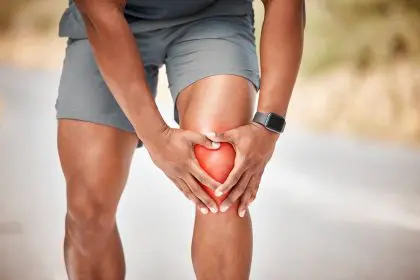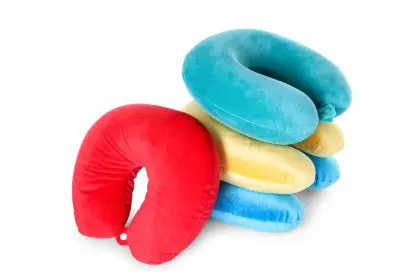In our fast-paced lives, body aches and discomfort have become unwelcome companions for many. These pains don’t just result from intense workouts or injuries – they often stem from ordinary activities like sitting at a desk, standing for extended periods, or even just walking around town. The good news is that effective topical pain relief solutions exist that can help manage these everyday aches without disrupting your routine.
The hidden causes of everyday discomfort
Pain doesn’t always result from obvious injuries or strenuous exercise. Many people are surprised to discover that their daily discomfort stems from seemingly harmless activities that put subtle but persistent strain on their bodies.
Extended periods of sitting represent one of the most common culprits behind everyday pain. Modern work environments often require hours at a desk, causing compression in the lower back and poor posture that leads to neck and shoulder tension. The human body wasn’t designed for prolonged sitting, yet many jobs demand exactly that.
Repetitive movements, even gentle ones, can trigger discomfort over time. Actions like typing, swiping on phones, or performing consistent motions in service or manufacturing jobs create microtrauma in tendons and muscles. This repetitive strain builds up gradually until it manifests as noticeable pain.
Poor sleep positions contribute significantly to morning aches and stiffness. Many people sleep in positions that fail to support proper spine alignment, causing them to wake with neck pain, lower back discomfort, or shoulder tension. This pain often lingers throughout the day, affecting productivity and mood.
Weather changes affect joint comfort more than many realize. Shifts in barometric pressure can cause tissues around joints to expand or contract, triggering discomfort particularly in those with arthritis or previous injuries. This explains why some people can “feel” rain coming before it arrives.
Stress manifests physically in the body, often as muscle tension. When under pressure, many people unconsciously tighten their shoulders, clench their jaw, or hold tension in their lower back. This persistent tightening leads to pain that can last long after the stressful situation has passed.
Understanding these hidden triggers helps explain why so many experience daily discomfort without obvious causes. Addressing these pains effectively requires solutions that work quickly and fit seamlessly into busy lifestyles.
How topical pain relievers work
Topical pain relief products offer targeted treatment directly where discomfort occurs. Unlike oral medications that circulate throughout the entire body, these products work through direct application to affected areas, offering several advantages for everyday pain management.
Pain-blocking ingredients like lidocaine prevent pain signals from reaching the brain. Lidocaine temporarily blocks sodium channels in nerve membranes, preventing the transmission of pain impulses. This numbing effect provides quick relief for surface-level pain without affecting your entire system.
Anti-inflammatory compounds reduce swelling and pressure around nerve endings. Ingredients like menthol dilate blood vessels near the skin’s surface, increasing blood flow to affected areas. This improved circulation helps reduce inflammation while creating a pleasant cooling sensation that distracts from pain.
Counterirritants create sensations that override pain signals. Ingredients such as capsaicin (derived from chili peppers) stimulate and then reduce the intensity of pain signals by depleting substance P, a pain transmitter in your nerve cells. The warming or cooling sensations these ingredients produce help mask underlying pain while the active components work to address its source.
Absorption enhancers improve ingredient penetration through the skin barrier. Modern formulations incorporate technologies that help active ingredients reach deeper tissues more effectively, allowing for better relief of muscle and joint pain beneath the skin’s surface.
The localized application minimizes systemic side effects common with oral pain medications. By delivering relief directly to the affected area, these products avoid many digestive, liver, and kidney concerns associated with oral pain relievers, making them suitable for more frequent use when needed.
Understanding these mechanisms helps explain why many people find topical pain relievers so effective for everyday discomfort. The direct application and targeted relief match well with the localized nature of most common aches and pains.
Five effective pain relief options
The market offers numerous topical pain relievers, but certain products stand out for their effectiveness in addressing everyday discomfort. Here are five options worth considering for your pain management needs.
Absorbine Junior Pro Pain Relief Gel tops the list for fast-acting relief. Priced at just $13, this affordable option delivers powerful results through its 4% lidocaine formula – one of the highest concentrations available without a prescription. Users report quick relief from muscle aches, arthritis pain, and joint discomfort that lasts for hours. Its convenient roll-on applicator allows for mess-free, targeted application to specific pain points. Some users mention experiencing relief that lasts for days, particularly for back pain and joint discomfort.
Biofreeze Pain Relief Gel utilizes menthol as its active ingredient to create a cooling effect that interrupts pain signals. This product works particularly well for muscle soreness and arthritis pain, with effects that can last 3-4 hours per application. Available in gel, spray, and roll-on formats, Biofreeze offers versatility for different application preferences. The cooling sensation provides immediate distraction from pain while the active ingredients work deeper into the tissue.
Penetrex Joint and Muscle Therapy Cream takes a different approach by focusing on inflammation reduction. Rather than simply numbing pain, this cream aims to address underlying causes through ingredients like arnica, vitamin B6, and MSM. Users report gradual improvement with consistent use, making it ideal for chronic conditions rather than just immediate relief. The cream absorbs completely without greasy residue, allowing application before work or social engagements.
Salonpas Pain Relieving Patches provide extended relief through a different delivery method. These adhesive patches contain methyl salicylate and menthol that release slowly over several hours, offering hands-free pain management. The patches can be cut to size and applied directly to pain points, making them ideal for back pain, shoulder tension, or knee discomfort. Their discrete nature allows for application under clothing during daily activities or work.
Tiger Balm Extra Strength Pain Relieving Ointment represents one of the oldest and most trusted formulas on the market. This concentrated ointment combines camphor, menthol, cajuput oil, and other traditional ingredients to create a warming sensation that penetrates deep into sore muscles. Though stronger-smelling than some modern alternatives, its powerful effects make it a standby for many with chronic pain. A small amount goes a long way, making the product economical despite its initially higher price point.
Each of these options offers unique benefits for different pain scenarios. Having several alternatives available allows you to match the treatment to your specific type of discomfort and preferred application method.
Application tips for maximum effectiveness
Using topical pain relievers correctly can significantly enhance their effectiveness. These application strategies help ensure you get the most relief from your chosen product.
Cleanse the area before application to remove oils, sweat, or residue that might create a barrier between your skin and the active ingredients. Washing with mild soap and water then patting dry creates an ideal surface for maximum absorption. This simple step can significantly increase the effectiveness of your pain relief product.
Apply to dry, intact skin only, avoiding cuts, scrapes, or irritated areas where the product might cause stinging or further irritation. The thin, damaged skin in these areas can allow too much of the active ingredient to enter your system at once, potentially causing discomfort rather than relieving it.
Start with a small amount and increase gradually if needed. Many topical pain relievers are concentrated, and applying too much initially can cause intense cooling, warming, or numbing sensations that some find uncomfortable. Beginning with a conservative amount allows you to gauge your sensitivity to the particular formula.
Massage gently until fully absorbed to improve penetration into deeper tissues. This action not only helps the product work more effectively but also provides additional pain relief through the benefits of touch and increased circulation to the area. The massage itself can help relax tight muscles that may be contributing to your discomfort.
Wash hands thoroughly after application unless treating hand pain to avoid transferring the product to sensitive areas like eyes, nose, or mouth. This precaution is particularly important with products containing ingredients like menthol or capsaicin, which can cause significant discomfort if they come into contact with mucous membranes.
Consider timing your application strategically. Applying before activities that typically cause pain can be preventative, while application before sleep can help reduce discomfort that might otherwise interfere with rest. For chronic conditions, maintaining a regular application schedule rather than waiting for pain to become severe often provides better overall management.
Following these simple guidelines helps ensure you receive the full benefit of your topical pain reliever while avoiding potential discomfort from improper application.
When to use each type of pain reliever
Different types of everyday pain respond better to specific formulations. Understanding which product to use for various discomfort scenarios helps you build an effective pain management strategy.
For sharp, localized muscle pain, high-concentration lidocaine products like Absorbine Junior Pro offer the best results. The numbing effect works quickly to interrupt intense pain signals, providing relief within minutes. This makes lidocaine-based products ideal for sudden muscle strains or specific trigger points that cause radiating pain.
Joint discomfort and arthritis pain typically respond well to salicylate-containing products or those with warming compounds. These ingredients increase blood flow to affected joints while reducing inflammation around sensitive nerve endings. The extended-release nature of patches like Salonpas makes them particularly suitable for all-day joint pain management.
Lower back tension from prolonged sitting benefits from dual-action formulas that combine cooling and anti-inflammatory ingredients. Products that first cool the area for immediate relief, then work to reduce underlying inflammation provide comprehensive treatment for this common complaint. The larger affected area might make creams or gels more practical than roll-on applications.
Neck and shoulder discomfort from poor posture often responds well to menthol-based products like Biofreeze. The cooling sensation helps relax tight muscles while increasing blood flow to the area. The ability to quickly apply and continue with your day makes these products particularly suited to office workers dealing with tension headaches and upper body stiffness.
Foot pain from standing or walking typically requires products with good penetration abilities. Creams containing arnica or turmeric compounds help address the deeper inflammation that often accompanies plantar fasciitis or foot strain. Evening application with gentle massage often yields the best results for this type of discomfort.
Having multiple options available allows you to address different types of pain as they arise. Many people find that keeping a small arsenal of topical treatments allows them to manage various discomforts effectively without relying on oral medications.
When to seek medical attention
While topical pain relievers effectively manage many everyday aches, certain situations warrant professional medical evaluation. Recognizing these warning signs helps ensure appropriate care for potentially serious conditions.
Pain accompanied by swelling, redness, and warmth might indicate infection or inflammation requiring medical treatment. These signs, particularly when they appear suddenly or worsen rapidly, suggest your body is fighting something more significant than routine muscle soreness.
Discomfort that persists for more than two weeks despite consistent use of over-the-counter remedies deserves professional evaluation. Chronic pain often signals underlying conditions that need specific diagnosis and targeted treatment beyond what topical products can provide.
Pain that wakes you from sleep or prevents normal daily activities indicates a severity level that warrants medical attention. When discomfort disrupts your ability to function normally or consistently interrupts rest, your body is sending strong signals that something needs addressing.
Numbness, tingling, or weakness accompanying pain may indicate nerve involvement requiring prompt evaluation. These sensations suggest pressure on or damage to nerves that could lead to long-term problems if not properly assessed and treated.
Recent injury with significant pain should receive proper medical assessment to rule out fractures or structural damage. While minor sprains and strains often respond well to home treatment, more severe injuries need professional evaluation to ensure proper healing.
Chest pain should always receive immediate medical attention to rule out cardiac issues, even if you suspect it’s muscular. The stakes are simply too high to self-diagnose when it comes to chest discomfort, as time is critical in cardiac events.
Using these guidelines helps ensure you address routine discomfort appropriately at home while seeking professional care when truly needed. This balanced approach provides the most effective path to pain management and overall health.
Complementary approaches to pain management
Topical pain relievers work most effectively when combined with other pain management strategies. These complementary approaches create a comprehensive system for addressing everyday discomfort.
Regular stretching programs can prevent and reduce muscle tension that contributes to common aches. Even five minutes of targeted stretching several times daily can significantly improve flexibility and reduce pain, particularly in the neck, shoulders, and lower back. Simple desk stretches can be incorporated into work routines to prevent pain before it develops.
Proper ergonomics at workstations prevents many common sources of discomfort. Adjusting chair height, monitor position, and keyboard placement reduces strain on muscles and joints during extended sitting. Investing in ergonomic equipment often costs less than managing the pain that develops from poor positioning.
Heat therapy through warm showers, heating pads, or heated wraps increases blood flow to tense areas, promoting healing and relaxation. This approach works particularly well for morning stiffness or chronic tension in large muscle groups. Applying heat for 15-20 minutes can prepare muscles for stretching or activity.
Cold therapy with ice packs or cold compresses reduces inflammation and numbs acute pain. This approach works best immediately after activity that causes discomfort or when joints feel hot and inflamed. Limiting cold application to 20 minutes prevents skin damage while providing effective relief.
Stress reduction techniques like deep breathing, meditation, or progressive muscle relaxation address the emotional components of physical pain. The mind-body connection significantly influences how we experience discomfort, with stress amplifying pain perception. Even brief relaxation practices can reduce muscle tension and pain sensitivity.
Regular, appropriate exercise strengthens supporting muscles, improving overall body mechanics. Stronger core muscles support the spine better, reducing back pain, while balanced strength around joints improves stability and reduces strain. Low-impact activities like walking, swimming, or cycling provide benefits without excessive stress on painful areas.
Combining these approaches with topical pain relievers creates a multi-faceted strategy that addresses both symptoms and causes of everyday discomfort. This comprehensive approach typically yields better results than any single method alone.
Managing everyday aches and pains effectively allows you to maintain your quality of life without letting discomfort dictate your activities. The five topical pain relief solutions highlighted – from Absorbine Junior Pro to Tiger Balm – offer accessible options for addressing various types of common pain.
Understanding when and how to use these products, combined with proper application techniques and complementary approaches to pain management, empowers you to take control of your comfort. While serious pain requires professional medical attention, many everyday aches respond well to these targeted treatments.
By incorporating these strategies into your routine, you can minimize the impact of common discomforts on your daily life. Whether you’re dealing with tension from desk work, soreness from physical activity, or the everyday aches that come with an active lifestyle, appropriate pain management tools help you continue doing what matters most to you with greater comfort and ease.

















